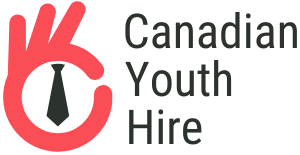Welcome back to our Dream Job series, where we discuss and analyze how to strategize and develop the right mindset in order to land our dream jobs. In the first article, we focused on laying the groundwork and assessing our skills and interests, along with building a vision with the help of SMART goal-setting. For the second article in your series, we will be focusing on market research and skill gap analysis, as the second step in our journey. The following passages will cover all you need to know in order to progress:
Understanding Market Dynamics: The Key to Career Exploration
Market research is a powerful tool in the quest for your dream job, especially for young Canadians navigating the ever-evolving job landscape. At its core, market research is about gathering information on industries, companies, and career paths that spark your interest. The purpose? To match your passions and skills with the right opportunities. It’s like putting together a puzzle, where each piece represents data about job trends, in-demand skills, and growth sectors. By keeping an eye on these elements, you can identify which fields are flourishing and align with your aspirations. This doesn’t just increase your chances of finding a job you’ll love; it also positions you in sectors where opportunities are expanding. For young individuals in Canada, where diverse industries from tech to healthcare are booming, market research is your roadmap, guiding you through choices and helping you carve a path that’s both fulfilling and in tune with the market’s pulse. A really good way to to this would be to visit a job fair.
To delve into industries and careers that resonate with your personal interests and values, start by listing sectors that intrigue you or align with your passions. Next, employ a variety of tools and resources for an in-depth exploration. Online databases such as LinkedIn, Glassdoor, and industry-specific platforms can offer a wealth of information on company cultures, roles, and industry trends. Professional networks, both online and in-person, provide invaluable insights through discussions, webinars, and networking events. Additionally, comprehensive industry reports and publications can shed light on sector performance, emerging opportunities, and future outlooks. By leveraging these resources, you can gain a holistic understanding of potential career paths, ensuring they align not just with your interests, but also with your core values and long-term aspirations.
The Essence of Skill Gap Analysis
A skill gap analysis is a strategic tool used to identify the differences between the skills you currently possess and the skills required for your dream job. This process involves a detailed assessment of your abilities, knowledge, and experience, and comparing them with the job requirements in your chosen field or position. The role of a skill gap analysis in career development cannot be overstated; it provides a clear roadmap for personal and professional growth, highlighting specific areas where further development is needed. By understanding the required skills and experience for desired jobs, you can tailor your learning and development efforts more effectively, ensuring that you’re not just prepared for the job market, but also positioned as a competitive candidate.
Assessing Your Current Skill Set
Objectively evaluating your own skills and experiences is the first step in a skill gap analysis. We’ve already talked about self-assessment, so in a way you are familiar with the concept – only this time we are going to do it in a more detailed and structured way. Begin by creating a comprehensive list of your skills, including both technical and soft skills, and compare this list against the job descriptions and qualifications of roles you aspire to. Tools and methods such as SWOT analysis (Strengths, Weaknesses, Opportunities, Threats) can provide a structured framework for this assessment, helping you to identify not only your strong points but also areas for improvement. Skill inventories, which are detailed lists of your skills, can also serve as a tangible reference to measure your progress over time.
Identifying and Addressing Gaps
Once you’ve identified your skill gaps, the next step is to devise a plan to bridge these gaps. Begin by prioritizing the skills that are most critical for your desired career path and consider various learning avenues. For instance, if a particular technology skill is lacking, enrolling in online courses or workshops can be a practical step. For soft skills like leadership or communication, you might seek out volunteer opportunities, join professional groups, or participate in local community events to gain experience. Don’t overlook the value of mentorship; finding someone who’s already successful in your desired field can provide guidance, insights, and even opportunities to practice new skills. Bridging skill gaps is a continuous process, and it’s important to approach it with a mindset geared towards lifelong learning and adaptability.
Bridging the Gap through Learning and Development
In the journey towards your dream job, bridging the skill gaps identified through your analysis is crucial, and this can be achieved through a mix of formal and informal learning opportunities. Formal education, such as online courses, workshops, and seminars, offers structured learning paths that are essential for acquiring specific technical skills or theoretical knowledge. On the other hand, informal learning experiences, such as networking events, industry meetups, and online forums, provide practical insights and real-world perspectives that are just as valuable.
Moreover, the role of real-world experience cannot be overstated. Internships, volunteering, and project-based learning offer hands-on experience, allowing you to apply what you’ve learned in a practical setting. These experiences not only enhance your resume but also give you a taste of what working in your chosen field might be like, helping to further refine your career goals and aspirations.
In the search for the best jobs, it’s essential to understand that work is more than just a means to an end; it’s a significant part of life that shapes our identity, happiness, and sense of fulfillment. People who are in the midst of this journey want not just any job, but a role that resonates with their deepest aspirations, aligning with what they value most in life. The key to unlocking these coveted positions lies in a diligent search, underpinned by robust data and a keen eye for new opportunities that emerge within dynamic careers landscapes. This process requires a blend of introspection and market intelligence, where individuals assess their own skills and desires against the backdrop of evolving industry trends. By doing so, people can pinpoint careers that not only promise growth and challenge but also align with their personal mission and vision for their life’s work. Remember, the quest for fulfilling work is a deeply personal endeavor, yet it’s also informed by the broader context of the job market and societal needs. By balancing these internal and external factors, individuals can navigate the complex landscape of modern careers, moving ever closer to the roles they truly want and the life they envision for themselves.
Conclusion
The process of finding your dream job is multifaceted, involving more than just a simple job search. Thorough market research and a precise skill gap analysis lay the groundwork for a successful career path, enabling you to align your personal interests and skills with the right opportunities. These steps should not be seen as one-off tasks but as ongoing processes that evolve with your career and the changing job market.
As we look forward to the next article in this series, we’ll explore how to leverage the insights gained from market research and skill gap analysis to engage in effective networking and build a compelling personal brand. These strategies will further enhance your visibility and appeal to potential employers, bringing you one step closer to your dream job.
Now is the time to embark on your market research and skill gap analysis journey. Start by exploring industries that fascinate you, assess your skills honestly, and identify where you need to grow. And as you progress, share your experiences, ask questions, and seek feedback. Your journey towards your dream career is unique, and every insight you gain along the way is invaluable. Let’s navigate this path together, building the skills and knowledge needed to not only land your dream job but to excel in it.




